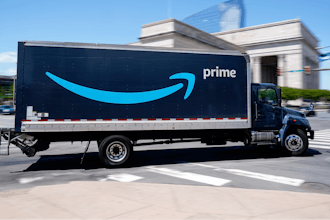
The WBSRocks e-commerce roundtable features industry experts sharing their perspectives on issues critical to the manufacturers' e-commerce journey. In this issue, we ask: how pricing strategies can help increase revenue for e-commerce companies.
Most companies struggle to take advantage of effective pricing strategies because they are either too afraid of the pricing implications or might not have access to the infrastructure to experiment and measure.
Pricing is psychological and could have a material impact on revenue if not utilized effectively. Also, pricing could have much deeper implications in improving the relationships with your channel partners or regulating your inventory. But how do you optimize pricing to take full advantage of it?
Sam Gupta, Principal Consultant, ElevatIQ
While the fundamental pricing principles are the same in traditional and e-commerce settings, e-commerce pricing is far more nuanced because consumers have access to more information to compare prices and make informed decisions. But, this information can help you equally if you utilize it to study consumer behavior and change your pricing as the consumer behavior changes.
In the traditional setting, you had very little information about the pricing of your competitors. Even if you gathered it by talking to your salespeople, prospects, or customers, it was not enough to create centralized intelligence. It was also challenging to change your price dynamically to take advantage of inventory stockouts of competitors, commodity pricing fluctuations, or unexpected rising demand. With e-commerce, there are tremendous opportunities to increase revenue and regulate inventory purely through pricing. But unless you invest in the underlying e-commerce infrastructure, you will miss most of these opportunities.
Steve Rice, Founder, Dotcomjungle, SR Consulting, The Globally Conscious Leader
Pricing strategies allow you to state your value to the customer, whereas discounting strategies underestimate that value. Most companies start with a cost-plus pricing strategy as it's easy to implement, where you calculate the price by adding up all the costs and adding an amount to it. Once you get a little sophisticated, then you might implement other strategies such as value-based.
Pricing also has a psychological effect on consumers. If consumers perceive the higher price as quality, then they will be willing to pay higher. But if they are price-sensitive and don't care for the added value offered by the premium product, they would instead buy a cheaper product.
Kristina Harrington, President, GenAlpha
Determining the appropriate price for each of your products is one of the most challenging aspects of any organization. This challenge grows exponentially as the number of products or SKUs increases.
The best way to establish pricing would be to categorize your products in the order of margin opportunity. You might also want to segment based on the proprietary products vs. a non-proprietary product (like a purchased part). You can charge higher margins for proprietary products if customers can only get from you. On the other hand, the purchased products or consumables (repetitive, high wear products with predictable replacement cycles) which may be more widely available and face competition will likely sell at a lower margin.
David Crysler, Operations Consultant, the Crysler Club | theCrysler.Club
Pricing your products and services is one of the most challenging aspects of operating a business. Set your price too high and you'll have a difficult time attracting sales. Set your price too low and risk not having enough margin to operate sustainably.
While there are many pricing and discounting strategies available to deploy, it is the combination of your operations, sales, and marketing efforts along with continued testing that will yield the biggest impact to your financial statement. The cost-plus margin approach is a good place to start as it is a straightforward equation. As your internal systems increase in sophistication, your access to information will also increase. With this increase in information, you'll be able to make more decisions more quickly and introduce more testing and complexity into your pricing and discounting strategy. This is when you can truly realize the power of investing into systems within your business because you can effectively measure the value of those decisions.
Colin R. Davidson, Partner, Omnium, omniumcpg.com
Pricing is an important consideration partly because it defines the margin dollars you have to run your business before you start making investments into discounting, marketing, and supply chain. Starting with an untenable margin can put you in the position of never having the freedom to take action to drive the business forward.
Most of us really like having conversations about pricing and discounting as we find it sexy, especially when compared to a sales controllable like distribution. Growing distribution requires sustained focus over long periods. It is easy to take your eye off of distribution in favor of more fun activities that have less impact on your business.
Remember to stay the course for profitable long-term growth!























